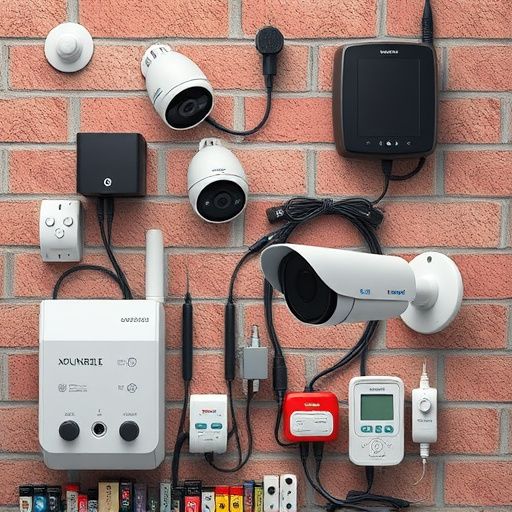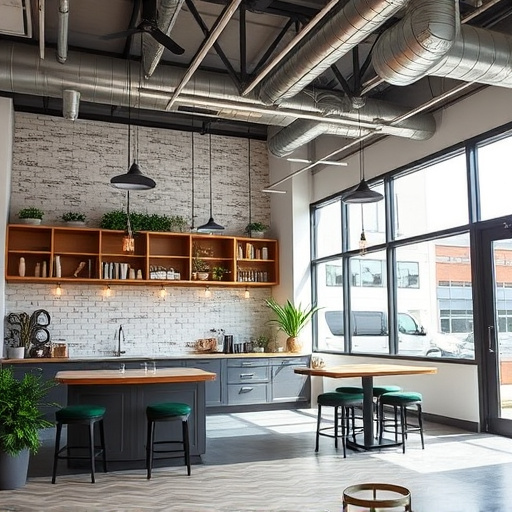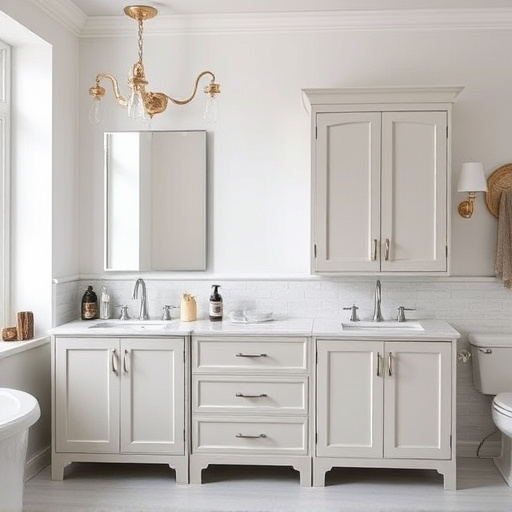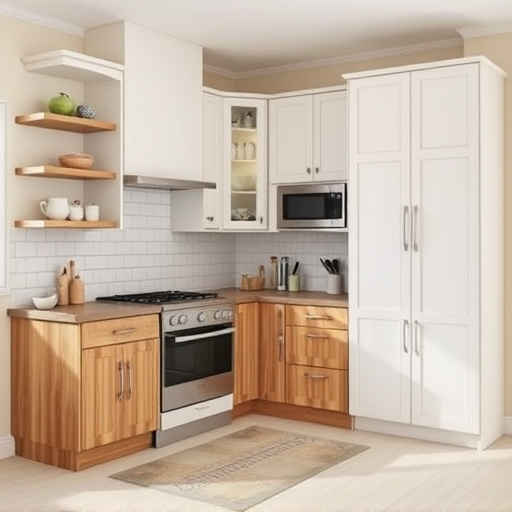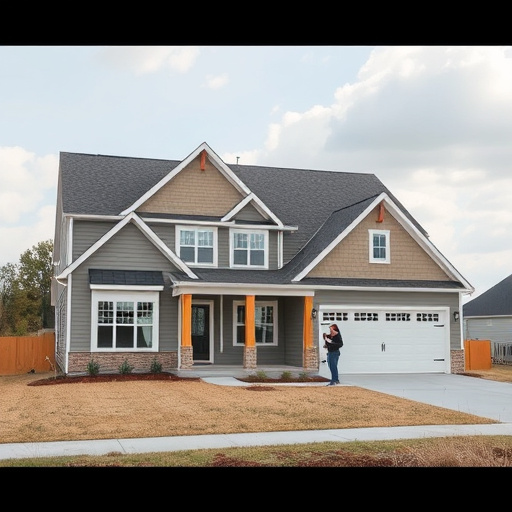In today's digital age, office design plays a crucial role in enhancing employee wellness and productivity. By integrating elements from kitchen and bath spaces, along with home improvement features like natural lighting and ergonomic furniture, offices can create an environment that promotes comfort, collaboration, creativity, and ownership. This approach, without extensive renovations, leads to improved job satisfaction and performance. A well-designed office includes ergonomic furniture, adequate natural lighting, indoor plants, art, color, and texture, creating a vibrant space tailored for optimal work performance. Services incorporating these principles can transform offices into engaging spaces that support both short-term focus and long-term employee wellness.
Office design plays a pivotal role in shaping employee wellness and focus. In today’s dynamic work environment, creating an ergonomic and stimulating space is essential for fostering productivity and overall well-being. This article explores the deep connection between office design and employee health, delving into key elements that enhance comfort and concentration. We’ll uncover strategies to transform your workspace, ensuring it supports and nurtures both mind and body.
- Understanding the Connection Between Office Design and Employee Wellness
- Key Elements of an Ergonomic and Stimulating Work Environment
- Strategies for Creating a Focus-Enhancing Office Space
Understanding the Connection Between Office Design and Employee Wellness
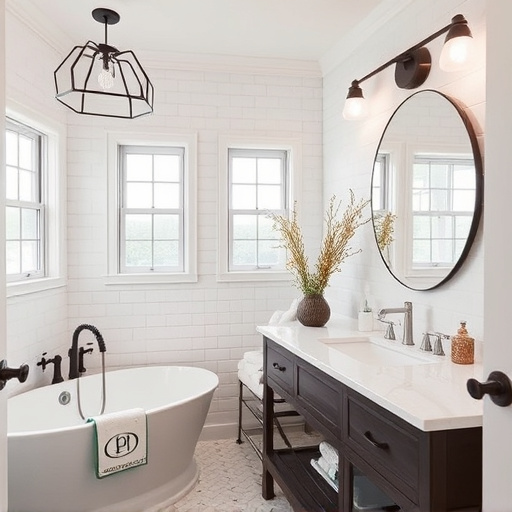
In today’s digital era, the office design plays a pivotal role in shaping employee wellness and focus. The physical environment where individuals spend a significant portion of their day can profoundly impact their mental and emotional state, as well as productivity. Understanding this connection is essential for organizations aiming to create healthy, happy, and engaged workforces. Office design isn’t merely about aesthetics; it’s a strategic tool that influences how employees interact with their space and each other.
A well-designed office incorporates elements from kitchen and bath spaces to promote comfort and collaboration, much like home improvement services enhance living areas. Customized home renovations for offices can include natural lighting, ergonomic furniture, quiet retreat areas, and vibrant common spaces. These modifications cater to diverse employee needs, ensuring everyone has the resources they require to thrive. Such designs foster a sense of ownership, encourage creativity, and ultimately contribute to improved job satisfaction and performance—all without breaking bank through radical customized home renovations.
Key Elements of an Ergonomic and Stimulating Work Environment
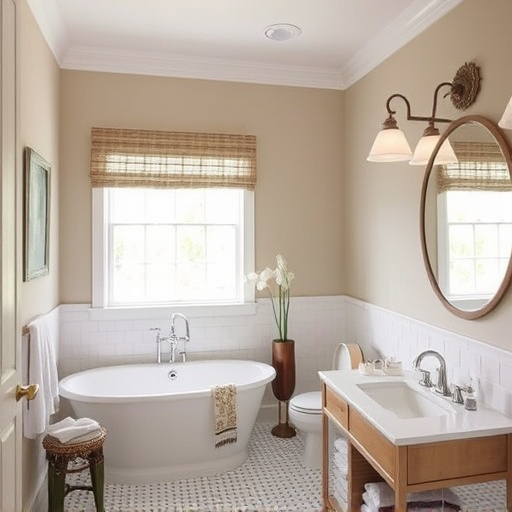
A well-designed office should prioritize ergonomics and visual stimulation to create a conducive work environment. Ergonomic furniture ensures that employees maintain proper posture, reducing the risk of musculoskeletal disorders. This includes adjustable desks, comfortable chairs, and standing desk options. Proper lighting is another critical aspect; natural light enhances mood and productivity while minimizing eye strain. Incorporating greenery in the form of plants or vertical gardens not only improves air quality but also adds a calming aesthetic to the space.
Furthermore, stimulating visual elements like art, colorful accents, and diverse textures on walls can boost creativity and employee satisfaction. A renovation service that understands these principles can transform mundane spaces into vibrant environments. Even smaller-scale projects, such as bathroom renovations or multiple room remodels, can make a significant difference in overall office ambiance.
Strategies for Creating a Focus-Enhancing Office Space
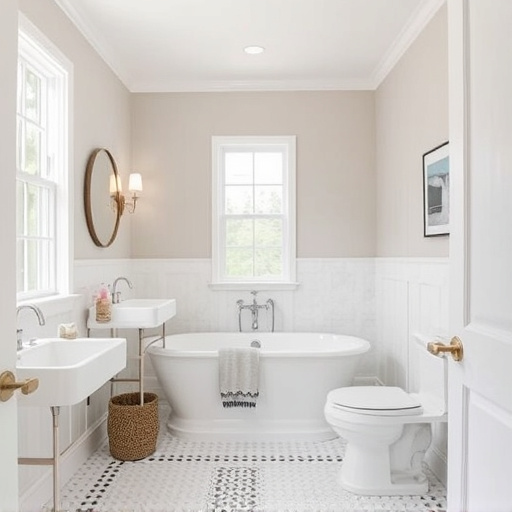
Creating a focus-enhancing office space involves thoughtful design strategies that cater to employee wellness and productivity. One key aspect is natural lighting; ample windows or skylights not only brighten up the workspace but also help regulate circadian rhythms, promoting better sleep and energy levels throughout the day. Additionally, incorporating greenery in the form of plants or vertical gardens can significantly reduce stress and increase focus, as studies show that being around nature boosts cognitive function.
Another essential element is ergonomic furniture. Adjustable desks, comfortable chairs, and standing desk options allow employees to customize their workstations according to their preferences and physical needs. This reduces muscle strain and discomfort, enabling them to stay focused for longer periods. Furthermore, dedicated break areas with comfortable seating and recreational activities, like games or meditation corners, can serve as mental respite points during workdays, enhancing overall employee satisfaction and concentration. These strategies, integrated into the office design, contribute to a healthier, more productive work environment that supports both short-term focus and long-term wellness.
Office design plays a pivotal role in fostering employee wellness and enhancing focus. By implementing ergonomic features, stimulating visual environments, and strategic layouts, organizations can create spaces that promote physical comfort, mental well-being, and productivity. Investing in thoughtful office design is not just an aesthetic choice; it’s a powerful tool to support employees’ overall health and satisfaction, ultimately contributing to better business outcomes.




